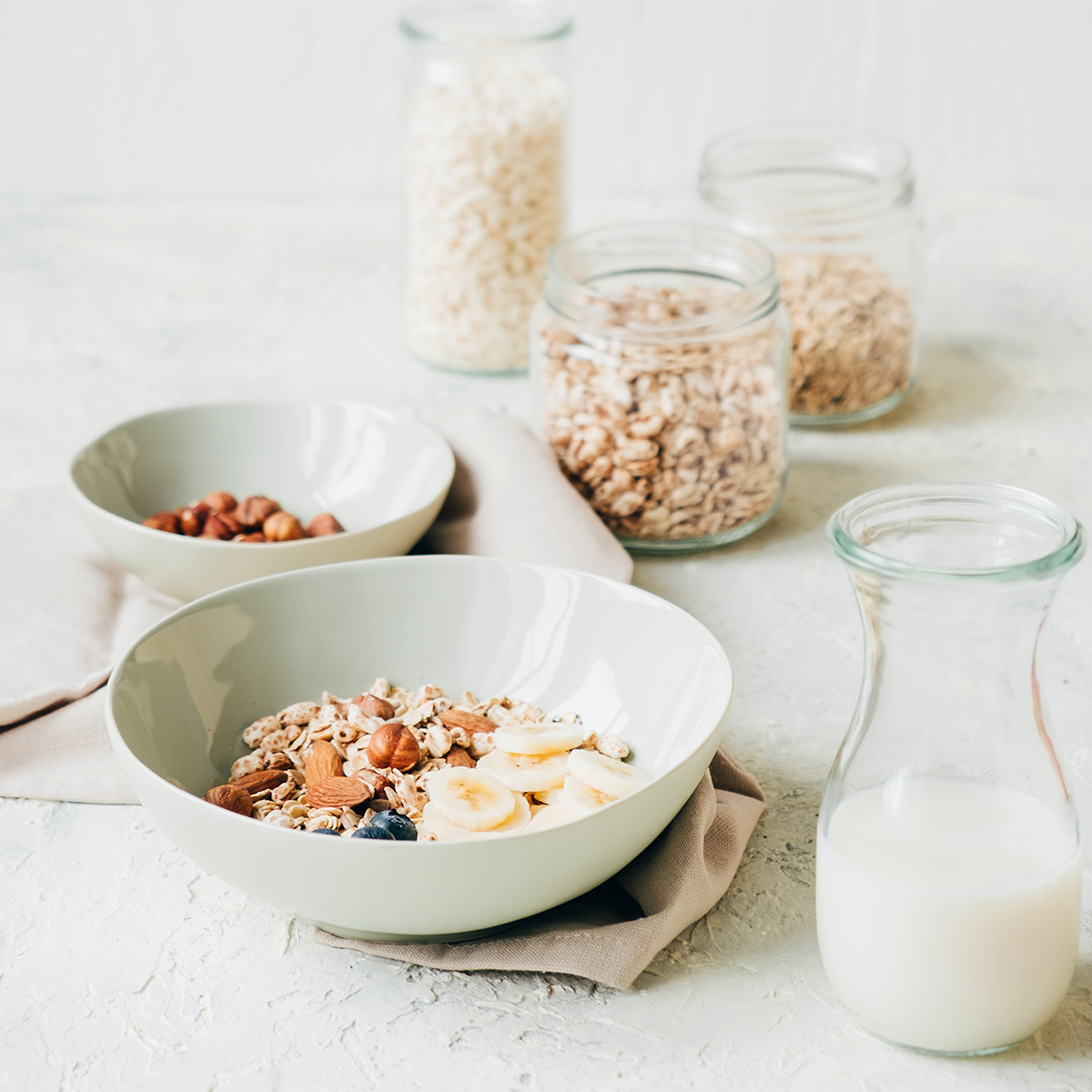Meet the Healthier, Tastier Version of Almond Milk

Almond milk is getting some serious competition in the plant-based, nondairy section at Whole Foods. “Oat milk is so hot right now,” my L.A. friend told me a few months ago as we ordered our non-dairy lattes at Alfred Coffee. When I returned to NYC, I noticed oat milk at all the trendy coffee spots: Joe’s, Birch, La Colombe, etc. My friend was right: Oat milk is having a moment. (Don’t be surprised if you see it at Starbucks within the year.) As diets like Whole30 continue to become mainstream, people are seeking non-dairy milk options. Personally, I’m welcoming oat milk into my fridge and lattes. It has a lot going for it.
Whitney Bowe, MD, and author of The Beauty of Dirty Skin says, “My patients report that they love its creamy texture and taste that’s hard to beat.” When asked about the benefits of the new drink, Bowe says that oat milk “tends to have more protein and fiber than most almond milk options on the market.”
Brooke Alpert, an NYC-based nutritionist and author of The Sugar Detox, is also a fan. “I love the oat milk direction we are going in because when you have a good quality oat milk, you’re also getting prebiotics,” she says. “Anything that you’re doing to feed your gut in a good way is only going to be beneficial for your skin, waistline, brain health, gut health, and more.”
Oat milk is even making its way into other non-dairy products such as “oatgurt” and oat milk–based ice creams. (Counting the minutes until there’s an oat crust pizza topped with oat cheese at Trader Joe’s.) “The push is really big right now—New York is picking up on it for sure,” says Mika Manninen, founder of Hälsa, a company that makes all-natural oatgurt drinks. “Customers are always looking for something new. Soy had its moment, and I think almond is at its end right now. So the next step is some sort of grain-based product.” If you think you’re ready to try out the latest milk trend, keep reading to learn more about the drink.
What Is Oat Milk?
Oat milk is really just like almond, coconut, soy, or hemp milk, except that oats are infused in the water to make the milk. “To make oat milk, you soak steel-cut or whole oats in water and then strain with a cheesecloth to remove the particles and leave the milk,” says Bowe. In fact, if you’ve ever had oatmeal, it’s likely that you’ve already tried oat milk. “If you’ve ever pressed the back of your spoon against the surface of the oats in your bowl, you’ll see oat milk fill the spoon. It’s the liquid that surrounds the actual oat particles floating in your bowl.”
Try Before You Buy
But before you start putting your leftover cereal milk in your coffee (although that does sound tasty), note that not all oat milk is created equal. Experts like Bowe and Alpert agree—always read the labels to make sure you’re buying oat milk that doesn’t have added sugar. “Just like there are some great small-batch almond milks that can be really healthy for you, there are also some nasty ones that are loaded with fillers, gums, stabilizers, sugars, preservatives, and so much more,” Alpert explains. “The same is going to happen with oat milk now that it’s becoming more popular. Find a brand with ingredients that you understand—whether it’s oat milk or almond milk.”
What Does Oat Milk Taste Like?
In my opinion, oat milk is creamy and less nutty or sweet than its almond and coconut sisters. I love it combined with another trendy power food: matcha. And no, it doesn’t taste like straight-up oatmeal or oat bread, but the flavor is there. “Plain oat milk can have an oat-y aftertaste,” explains Manninen. “Coconut and almond definitely have a dominant flavor. If I add almond milk to my coffee, it tastes like almond. You either try oat milk once and dig it or you don’t. It’s an acquired taste.”
Why Is It So Healthy?
Oatmeal has traditionally been pegged as a heart-healthy, satisfying breakfast, and you can expect the same from pure oat milk. “Oats have a couple of good things in them,” says Manninen. “Oats have fiber and beta-glucan (the heart- and stomach-healthy fiber), so they make you feel full. Oats also have a naturally occurring protein and a good amount of fat. It’s the same kind of fat you find in avocados.”
Bonus: It's Beneficial for Your Skin
You’ve likely seen oat-infused skin and bodycare products in beauty aisles, and for good reason. “Oats are known for being anti-inflammatory,” Bowe confirms. “In fact, I’ve been recommending oats for inflamed skin for years. For example, for a sunburn or eczema, I always recommend oatmeal baths or products containing oats to help heal and soothe the inflamed skin.”
Like other wonder foods, oats also have an inside-out effect on the skin. “We also now know that oatmeal can even act as a prebiotic on the skin, encouraging the growth of healthy bacteria and promoting a healthy skin barrier,” Bowe says. “So while most people eat oats for heart health or to keep full and satisfied, I recommend them to my patients to keep their skin radiant and healthy. I suspect that some of those benefits are preserved in the milk or liquid, but we’ll have to wait for more studies to determine the specific benefits of drinking oat milk on the skin.”
Whether you want to switch over to oat milk for its taste or health benefits, you can’t go wrong by trying it in your next latte. Who’s with me?
This article is provided for informational purposes only and is not intended to be used in the place of advice of your physician or other medical professionals. You should always consult with your doctor or healthcare provider first with any health-related questions.